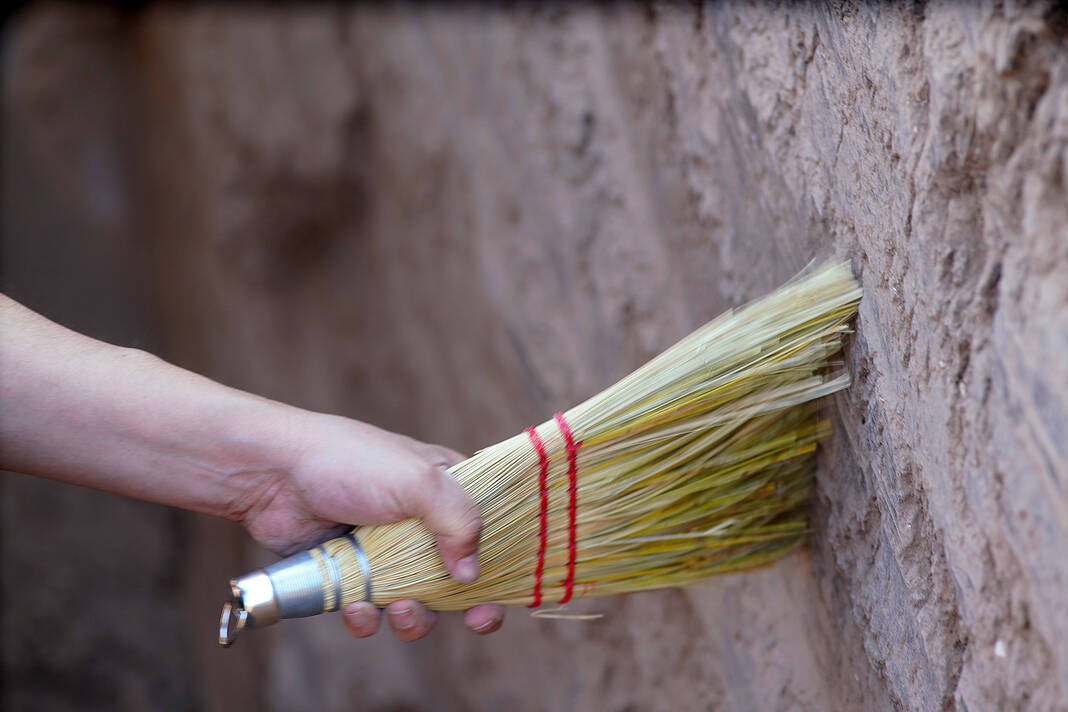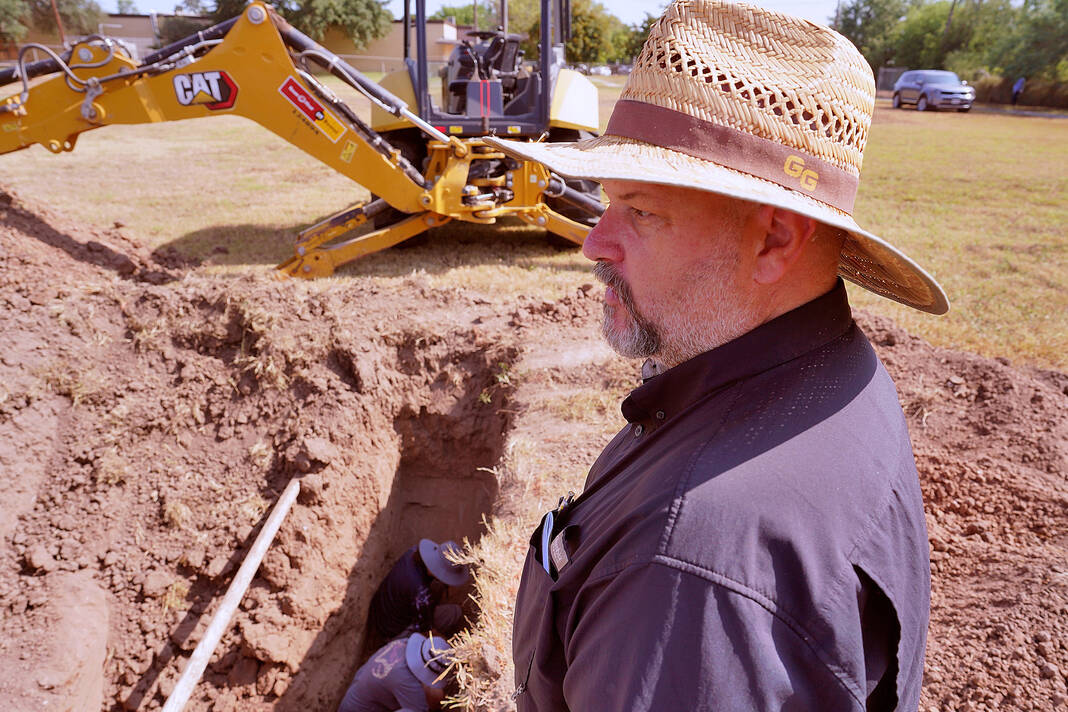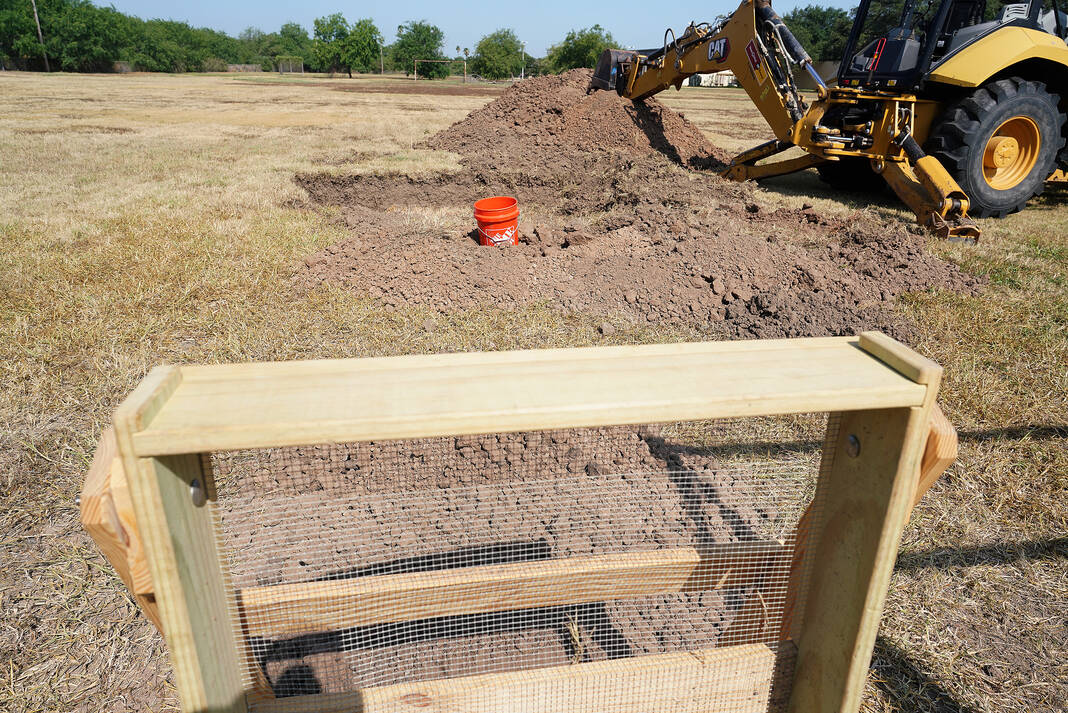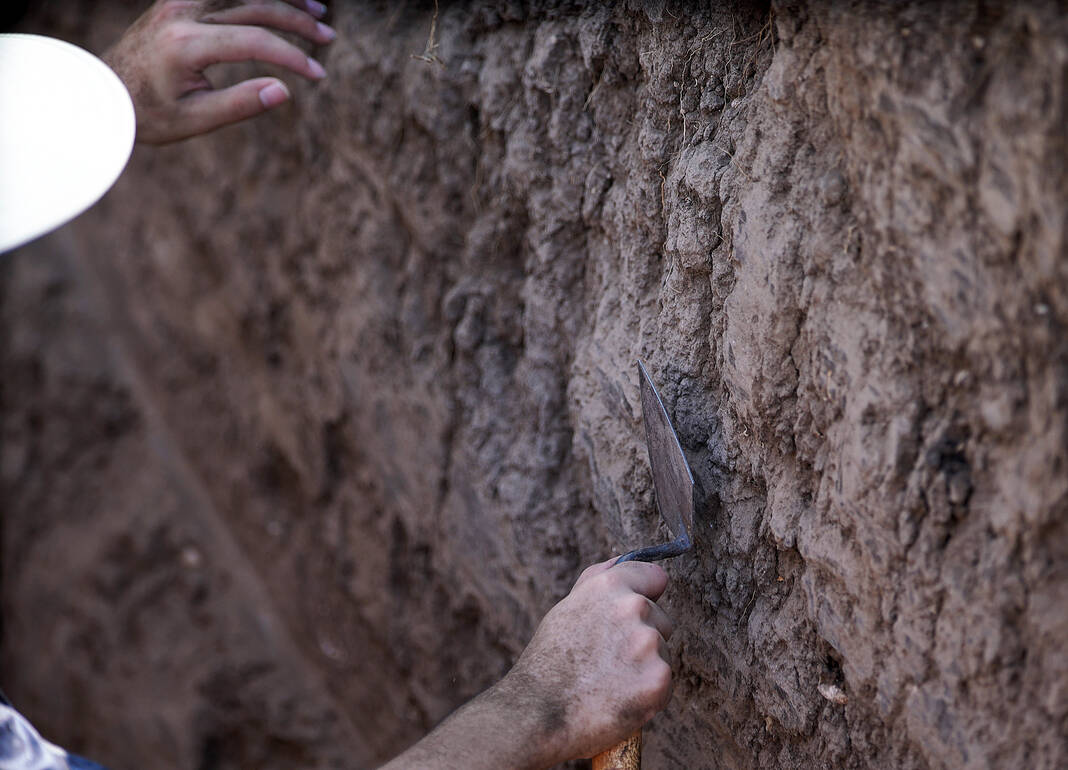|
Only have a minute? Listen instead
Getting your Trinity Audio player ready...
|
McALLEN — The archaeological dig at McAllen ISD’s vacant Bonham Elementary campus, led by UTRGV Assistant Anthropology professor Edward Gonzalez-Tennant got underway Tuesday with an unlikely possibility to find anything, but offers a treasure chest of experience for his students.
As previously reported by The Monitor, the archeological dig on the property owned by the district must undertake an archaeological compliance as part of the National Historic Preservation Act.
The district plans to sell the South McAllen property to the Boys & Girls Club of McAllen, but by federal law must conduct an archaeological dig given that the property might intersect a prehistoric/Indigenous burial ground.
Gonzalez-Tennant said the property is located close to a burial ground called the Ayala site, which was first discovered in 1948 during construction of a sewer trench.
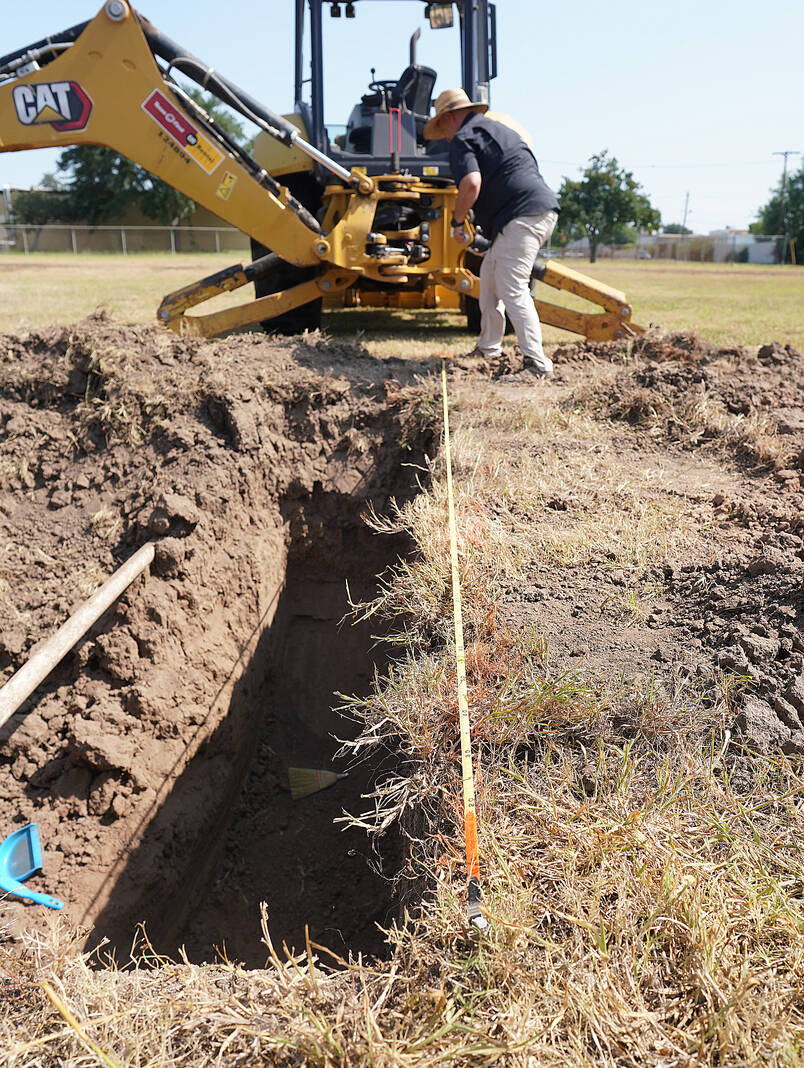
He said the site had several burials dating back within the last thousand years, with many of the burials having grave goods such as jewelry, seashells, coyote teeth, pendants and various other personal adornment items.
Gonzalez-Tennant said the Indigenous people burying their dead with objects signify something about who they were in life, which is similar to the way people bury their loved ones today.
Hiring a backhoe operator from San Antonio company, Alamo1 with previous archaeological experience, with the most recent being in Brownsville, Gonzalez-Tennant and his group of graduate and undergrad students began their regular procedures after the operator dug a 2-feet-by-12-feet-by-6.5-feet trench.
Gonzalez-Tennant who is also the director of the Laboratory of Valley Archaeology said the location of the dig site was determined by analyzing aerial photographs as far back as 1955 to determine what part of the property has been relatively untouched and undisturbed.
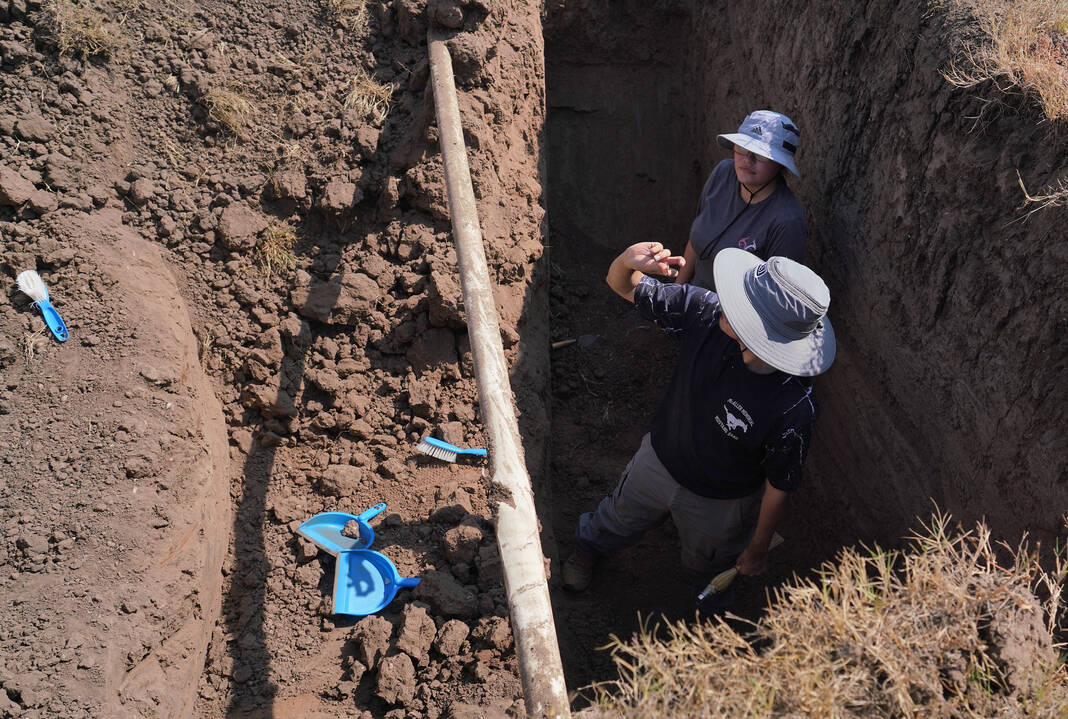
“This is a pretty standard way of looking for archaeology, particularly in this area where you have a lot of eluvial deposits, right, like old floodplain deposits, because you’ve got to get deep before you hit stuff,” he said.
To his surprise, there was a PVC pipe in the trench but the archaeologists worked around it.
Students got right to work cleaning the wall, analyzing the layers of sediment and mapping out any stratigraphic changes.
The team of archaeologists get a bucket of dirt and put it through a screen in hopes to reveal something from the past.
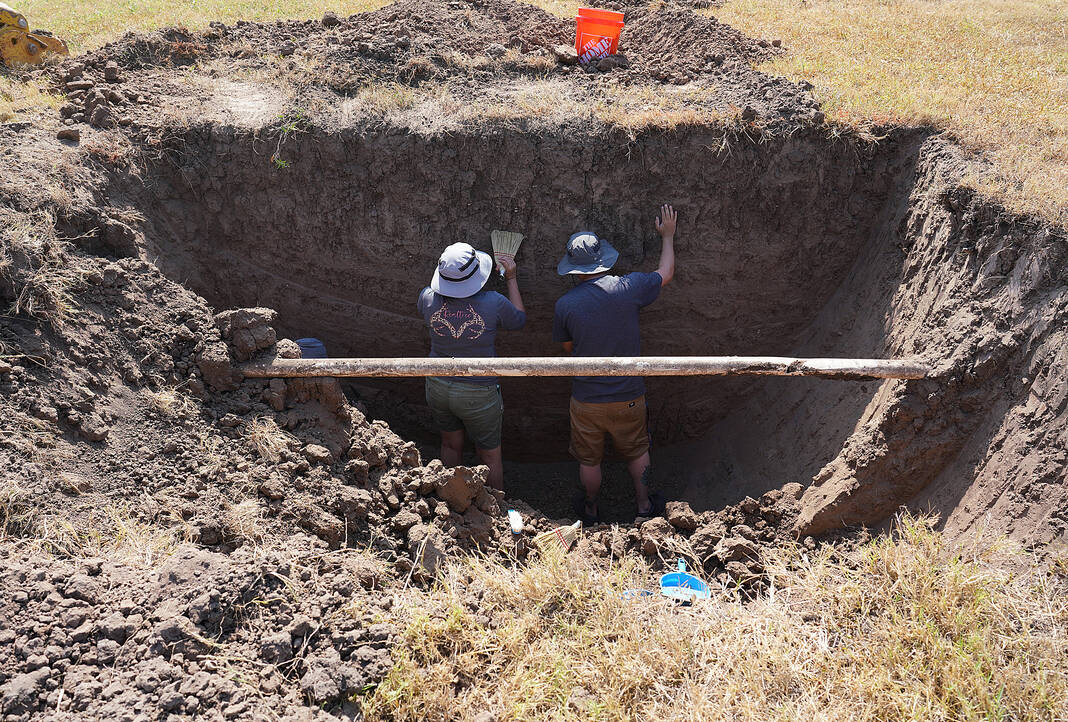
“We’re on a terrace above a floodplain,” he said. “I was kind of expecting to see more river pebbles or cobbles but … we’ve either not gone deep enough or this just was never part of the old channel millions of years ago.”
Instructing his students and asking them questions about what they observe, one of them was Robert Paul Del Barrio, a graduate student whose thesis revolves around projectile points like the tip of arrows or spears.
“It’s super cool, because we get to experience some of our local history that a lot of people don’t necessarily know about,” Del Barrio said. “Maybe this site’s not producing materials, but it’s still cool to know that just a little bit north is the Ayala site. It’s pretty much in close proximity and it’s just really cool to be able to experience these types of historical moments.”
Bringing his expertise on projectile points he said hopes to find something but it is important to him to let people know that there are historical artifacts in the Valley and that people don’t have to leave in search of things like this.
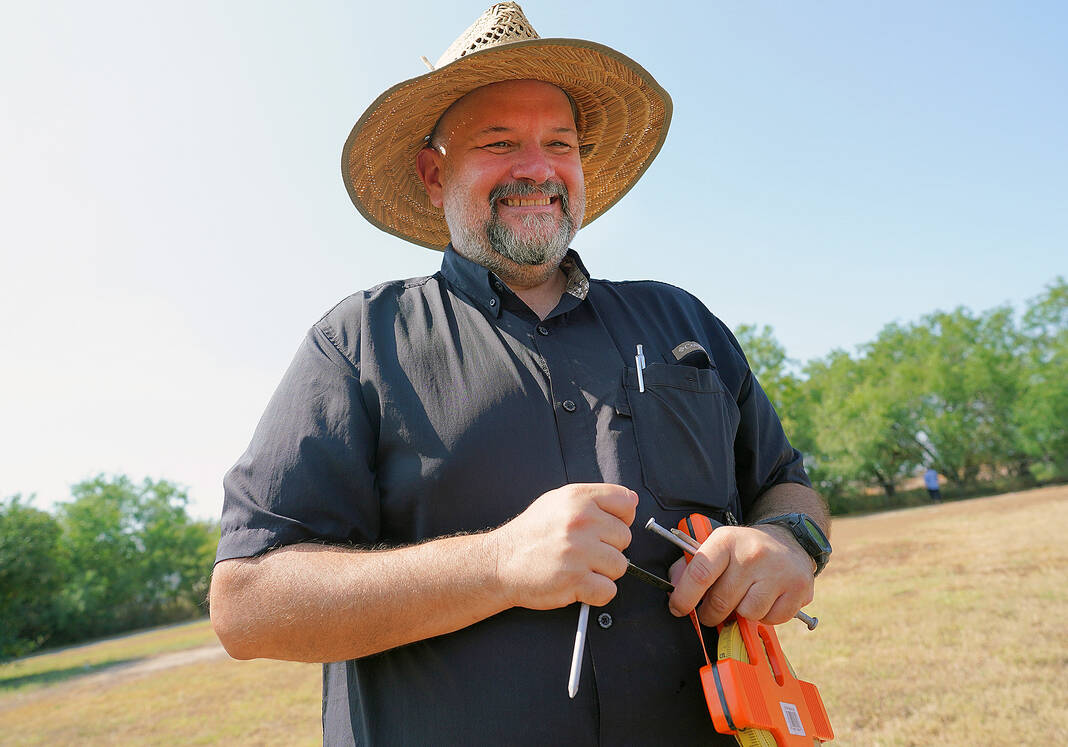
With Gonzalez-Tennant offering a summer course for students to get hands-on experience near Laguna Heights this summer, Del Barrio said this is good insight to what they can expect soon.
“We only got to do one hole here, but out there, we’re gonna have a few more holes,” he said. “So having a little bit of knowledge, how this actually plays out, what to expect, the safety measures and all that stuff plays a big role in what’s to come in the summer.”
Gonzalez-Tennant has said it is unlikely to find anything and when asked if he felt the same way during the dig itself, he replied, “It produced almost nothing. In Texas, the official way to classify a site or record one is if you have five or more artifacts in an area. We don’t even have that. We have a bolt, which probably has fallen here, one tiny piece of lithic, just a tiny flake that came off of a stone tool. No way to date that.”
The next step in the archaeological process will be to take whatever is found and analyze it and write a formal report to the Texas Historical Commission.



